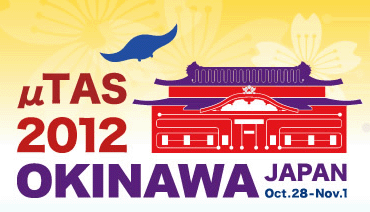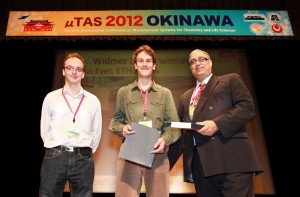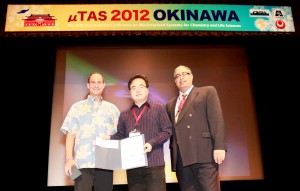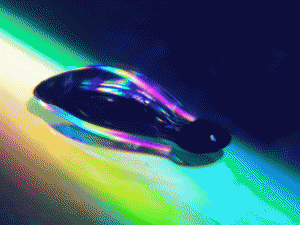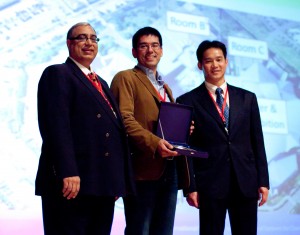The following articles were in the Lab on a Chip top ten most accessed for the month of August:
Microfluidic designs and techniques using lab-on-a-chip devices for pathogen detection for point-of-care diagnostics
Amir M. Foudeh, Tohid Fatanat Didar, Teodor Veres and Maryam Tabrizian
Lab Chip, 2012, 12, 3249-3266
DOI: 10.1039/C2LC40630F
Configurable 3D-Printed millifluidic and microfluidic ‘lab on a chip’ reactionware devices
Philip J. Kitson, Mali H. Rosnes, Victor Sans, Vincenza Dragone and Leroy Cronin
Lab Chip, 2012, 12, 3267-3271
DOI: 10.1039/C2LC40761B
Electrokinetics with “paper-and-pencil” devices
Pratiti Mandal, Ranabir Dey and Suman Chakraborty
Lab Chip, 2012, 12, 4026-4028
DOI: 10.1039/C2LC40681K
Microfluidic evaporator for on-chip sample concentration
Xavier Casadevall i Solvas, Vladimir Turek, Themistoklis Prodromakis and Joshua B. Edel
Lab Chip, 2012, 12, 4049-4054
DOI: 10.1039/C2LC40746A
Joining plasmonics with microfluidics: from convenience to inevitability
Jaeyoun Kim
Lab Chip, 2012, 12, 3611-3623
DOI: 10.1039/C2LC40498B
A novel microfluidic microplate as the next generation assay platform for enzyme linked immunoassays (ELISA)
Junhai Kai, Aniruddha Puntambekar, Nelson Santiago, Se Hwan Lee, David W. Sehy, Victor Moore, Jungyoup Han and Chong H. Ahn
Lab Chip, 2012, 12, 4257-4262
DOI: 10.1039/C2LC40585G
Optical imaging techniques in microfluidics and their applications
Jigang Wu, Guoan Zheng and Lap Man Lee
Lab Chip, 2012, 12, 3566-3575
DOI: 10.1039/C2LC40517B
Concentration gradient generation of multiple chemicals using spatially controlled self-assembly of particles in microchannels
Eunpyo Choi, Hyung-kwan Chang, Chae Young Lim, Taesung Kim and Jungyul Park
Lab Chip, 2012, 12, 3968-3975
DOI: 10.1039/C2LC40450H
Frontiers of optofluidics in synthetic biology
Cheemeng Tan, Shih-Jie Lo, Philip R. LeDuc and Chao-Min Cheng
Lab Chip, 2012, 12, 3654-3665
DOI: 10.1039/C2LC40828G
Electrode-free picoinjection of microfluidic drops
Brian O’Donovan, Dennis J. Eastburn and Adam R. Abate
Lab Chip, 2012, 12, 4029-4032
DOI: 10.1039/C2LC40693D
Why not take a look at the articles today and blog your thoughts and comments below.
Fancy submitting an article to Lab on a Chip? Then why not submit to us today or alternatively email us your suggestions.











